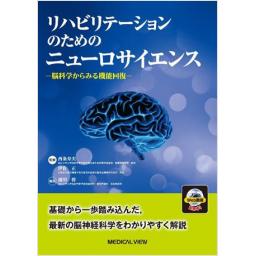1) 潮見泰藏:脳卒中に対する標準的理学療法介入 何を考え, どう進めるか? , 文光堂, 2007.
2) Spruston N. Pyramidal neurons:dendritic structure and synaptic integration. Nature Reviews Neuroscience 9:206-221, 2008.
3) Urakawa S, et al:Environmental enrichment brings a beneficial effect on beam walking and enhances the migration of doublecort in-positive cells following striatal lesions in rats. Neuroscience 144(3):920-933, 2007.
4) Adam D, et al:The p38α MAPK Regulates Microglial Responsiveness to Diffuse Traumatic Brain Injury. J Neurosci 33(14):6143-6153, 2013.
5) Urakawa S, et al:Rearing in enriched environment increases parvalbumin-positive small neurons in the amygdala and decreases anxiety-like behavior of male rats. BMC Neurosci 14:13, 2013.
6) Kandel ER, et al:Principles of Neural Science. 5th ed, McGraw-Hill Education, 2012.
7) Kwan KY, et al:Transcriptional co-regulation of neuronal migration and laminar identity in the neocortex. Development 139(9):1535-1546, 2012.
8) 山脇健盛:脳保護療法, 現代医療 33:519-525, 2001.
9) Kuner R:Central mechanisms of pathological pain, Nat Med 16(11):1258-1266, 2010.
10) Nahmani M, Turrigiano GG:Adult cortical plasticity following injury:Recapitulation of critical period mechanisms?, Neuroscience 26(283)4-16, 2014.
11) Xerri C, et al:Interplay between intra- and interhemispheric remodeling of neural networks as a substrate of functional recovery after stroke:adaptive versus maladaptive reorganization. Neuroscience 26(283):178-201, 2014.
12) Taub E, et al:New treatments in neurorehabilitation founded on basic research. Nat Rev Neurosc i3(3):228-236, 2002.
13) Nudo RJ, et al:Neural substrates for the effects of rehabilitative training on motor recovery after ischemic infarct. Science 272(5269):1791-1794, 1996.
14) Humm JL, et al:Use-dependent exacerbation of brain damage occurs during an early post-lesion vulnerable period. Brain Res 9(783):286-292, 1998.
15) Xerri C, Zennou-Azogui:Influence of the postlesion environment and chronic piracetam treatment on the organization of the somatotopic map in the rat primary somatosensory cortex after focal cortical injury. Neuroscience 118(1):161-177, 2003.
16) Xerri C, Zennou-Azogui:Early and moderate sensory stimulation exerts a protective effect on perileison representation of somatosensory cortex after focal ischemic damage. PLoS One 9(6):e99767, 2014.
17) 潮見泰藏:ビジュアル実践リハ脳・神経系リハビリテーション, 羊土社, 2012.
